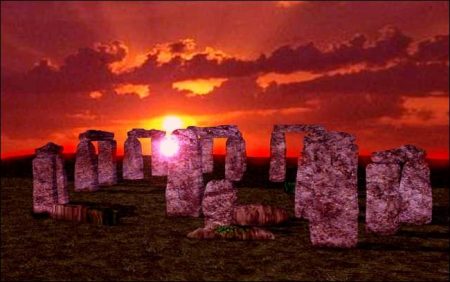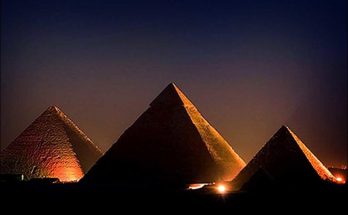Stonehenge
The great prehistoric (Neolithic or early Bronze Age) monument on Salisbury Plain, originally consisting of two concentric circles of upright stones, enclosing two rows of smaller stones, and a central block of blue marble, 18 feet by 4 feet, known as the Altar Stone. Many theories as to its original purpose and original builders have been propounded. It was probably used, if not built by the Druids, and from its plotting, which, it is certain, had an astronomical basis, it is thought to have been the temple of a sun god and to have been built about 1680 B. C.
The -henge of the name seems to refer to something hanging (A.S. hengen) in, or supported in, the air, viz., the huge transverse stones; but Geoffrey of Monmouth connects it with Hengist, and says that Stonehenge was erected by Merlin to perpetuate the treachery of Hengist in falling upon Vortigern and putting him and his 400 attendants to the sword. Aurelius Ambrosius asked Merlin to devise a memento of this event, whereupon the magician transplanted from Killaraus, in Ireland, the “Giant’s Dance,” stones which had been brought thither from Africa by a race of giants and all of which possessed magic properties.
Visits: 121



